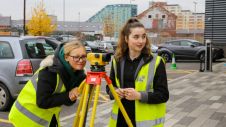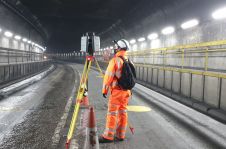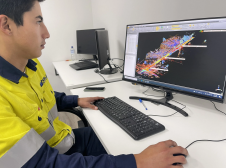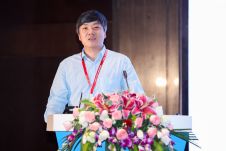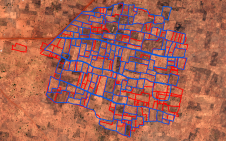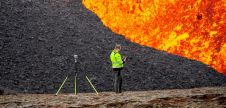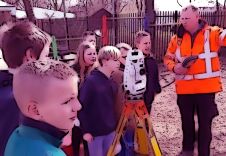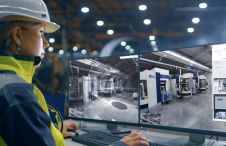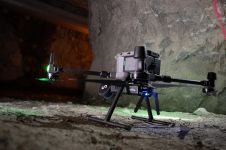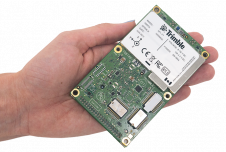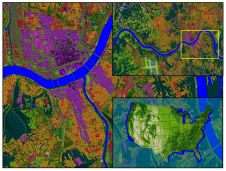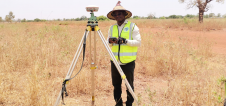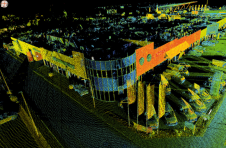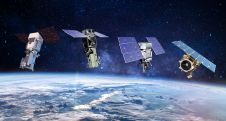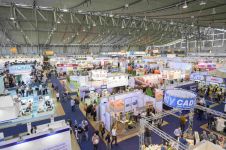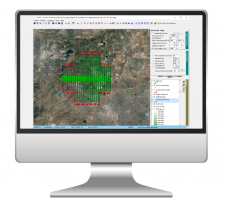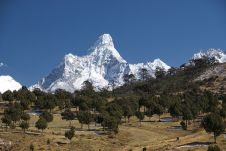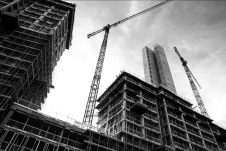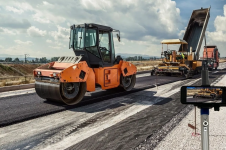Sensor Technology Evolving in Many Directions
5 Questions to…Michel Stanier
As Lidar is a hot topic in the geomatics industry with numerous fields of applications, 'GIM International'decided to ask Michel Stanier, chief operating officer of Teledyne Optech, to answer five questions in the context of airborne Lidar.
Lidar has been developing rapidly over the last couple of years. Can you give us an update?
Indeed, airborne Lidar is developing rapidly in several directions. The unmanned aerial system (UAS)/remotely piloted aircraft system (RPAS) platforms are driving a continued reduction in sensor size, weight and power. However, for commercial data providers, the primary focus remains on collection efficiency and lower operating costs to increase competitiveness. Teledyne Optech has led the charge by developing unique, innovative solutions such as SwathTRAK’s adaptive field of view (FOV), which eliminates the inherent inefficiency of fixed-FOV sensors in changing terrain elevations. The net result is a sharp reduction in flight/processing time and a constant point density even in highly variable terrain. We are continuing to push the efficiency envelope with more major improvements to our Galaxy platform, the most compact and versatile sensor in the marketplace.
其他重要pione激光雷达的发展ered are the Eclipse – the first low-cost, autonomous sensor – and the Titan, which is the first multi-wavelength, multi-application sensor. The Eclipse is the ideal entry-level sensor for data collection up to 3,000 feet, whereas the Titan supports numerous applications – simultaneous high-resolution topography and/or bathymetry and enhanced classification capability – in a single-sensor configuration, letting service providers differentiate and grow their addressable market.
What are the most relevant applications of your products?
We see two distinct Lidar sensor categories. The first category is one of generalist sensors that offer flexibility and diverse applications, enabling different project types with a single sensor investment. This includes our Galaxy, a high-performance mapping sensor that delivers unparalleled collection efficiency for wide-area mapping projects, but is also excellent for low-altitude, high-precision corridor work from smaller platforms thanks to its compact size and variable power feature. The multispectral Titan is another generalist sensor that can handle high-resolution topographic and bathymetric surveys simultaneously. Finally, our new Polaris terrestrial laser scanner (TLS) doubles as a high-speed indoor scanner for building information modelling (BIM) initiatives and a long-range outdoor scanner for geomorphic hazards or infrastructure mapping. The second category is one of application-specific sensors such as the Eclipse – totally autonomous mapping Lidar used primarily for corridor and small-area surveys on smaller platforms.
映射应用的最新进展是光子激光雷达(也称为Geiger-Mode LiDAR)。您对此有何期望?
正如我前面提到的那样,效率是激光雷达映射市场的关键驱动力,这项新技术旨在从高海拔地区收集大量数据。尽管Geiger-Mode LiDAR似乎很有吸引力,但它具有一些实用的现实生活局限性(例如云覆盖),通常可以防止高空操作。结果,它在许多地区必须飞行得多的地区的最大效率远远低。此外,它本质上是嘈杂的(低信噪比[SNR]),并且依赖于广泛的平滑性来实现在映射应用中预期的高精度。诸如植被之类的复杂目标特别具有挑战性。最后,其高价点和复杂的数据处理也是限制因素。相比之下,在晴朗的天空很少的地区,高SNR传感器(例如Galaxy)在全年中都有更多的收集机会。它们更简单地部署和运行,并且正在迅速缩小收集效率的差距,同时固有地交付了越来越准确的单轮数据。我们希望Geiger-Mode LiDAR在某些地区和应用中表现出色,但认为它不会替代高SNR传感器。
联合斜成像和激光雷达传感器似乎是最新趋势。Teledyne Optech是否提供类似的解决方案?
Indeed, most sensor deliveries include an integrated camera – RGB, infrared (IR), thermal – and frequently more than one. These cameras are mounted in a variety of ways depending on application requirements. Our standard Lidar/camera mounting systems are very flexible and scalable so clients can fit multiple cameras in various orientations alongside their Lidar systems. Our available mounting options include gyro-stabilised and fixed-mount solutions for aircraft or helicopter pods. We also offer an oblique imaging solution on a carbon fibre frame for urban mapping initiatives.
What other developments do you foresee in the near future?
Sensor technology is clearly evolving in many directions. There is a strong push to develop very compact, low-cost Lidar sensors for unmanned aerial vehicles (UAVs) and even more so for cars. There is also a trend towards ever-higher point density as we strive to achieve blanket coverage of the world around us. Finally, there is the age-old drive for greater efficiency in data collection and processing. The latter is a very important factor in terms of development. Certain industry assumptions, such as the need for a highly skilled sensor operator, are being challenged by autonomous sensors such as the Eclipse and Polaris. These sensors can be programmed to execute survey plans generated at the office without human control. Similarly, data processing is becoming very streamlined, and rapid advances in artificial intelligence (AI) enable increasing automation of high-quality data processing, even in challenging conditions. Finally, the integration of multiple sensor types and high-performance data fusion algorithms, often in real time, is also opening up new applications and opportunities.
了解有关Teledyne Optech产品的更多信息Geo-matching.com.
使您的收件箱更有趣。Add some geo.
Keep abreast of news, developments and technological advancement in the geomatics industry.
免费注册

